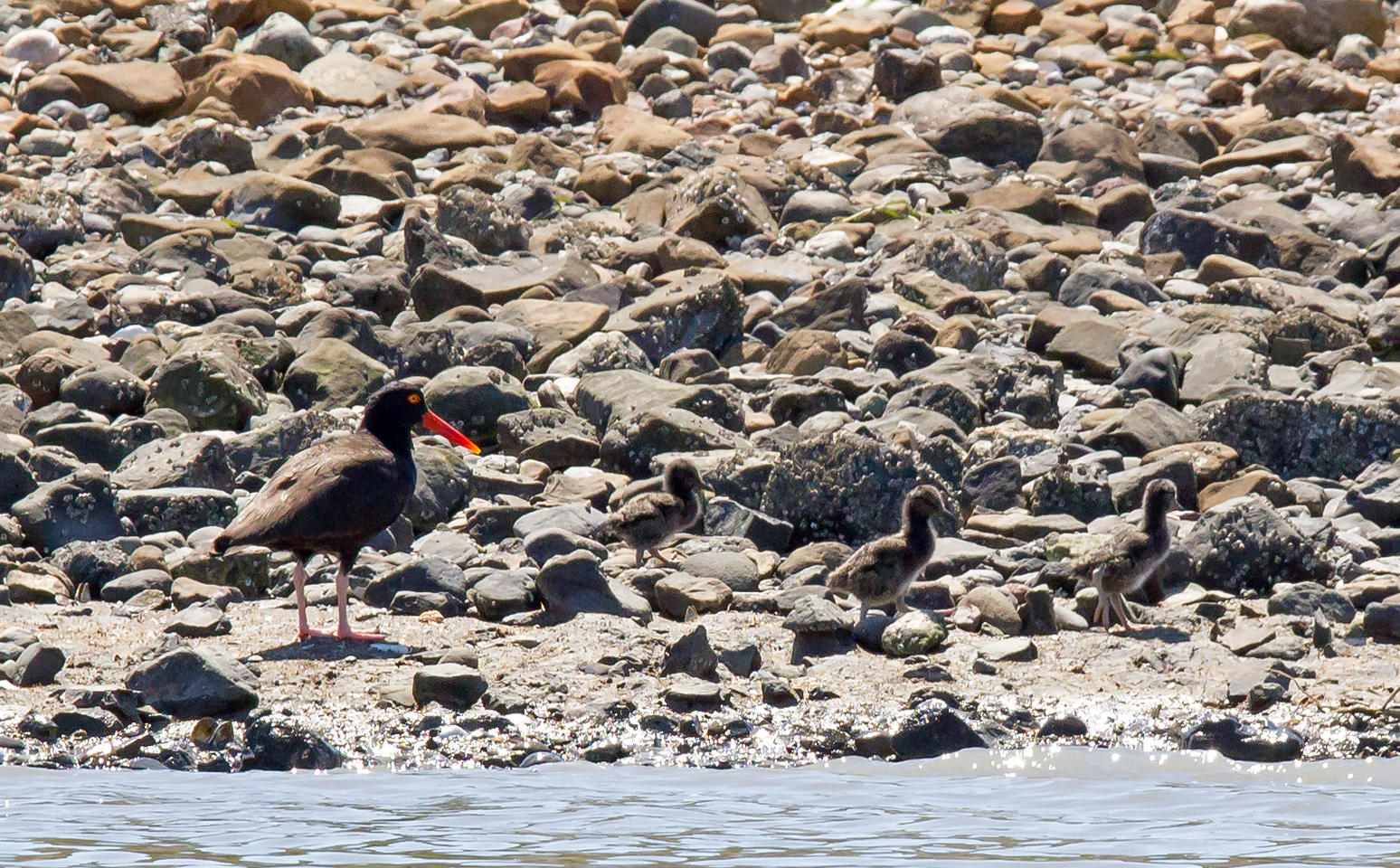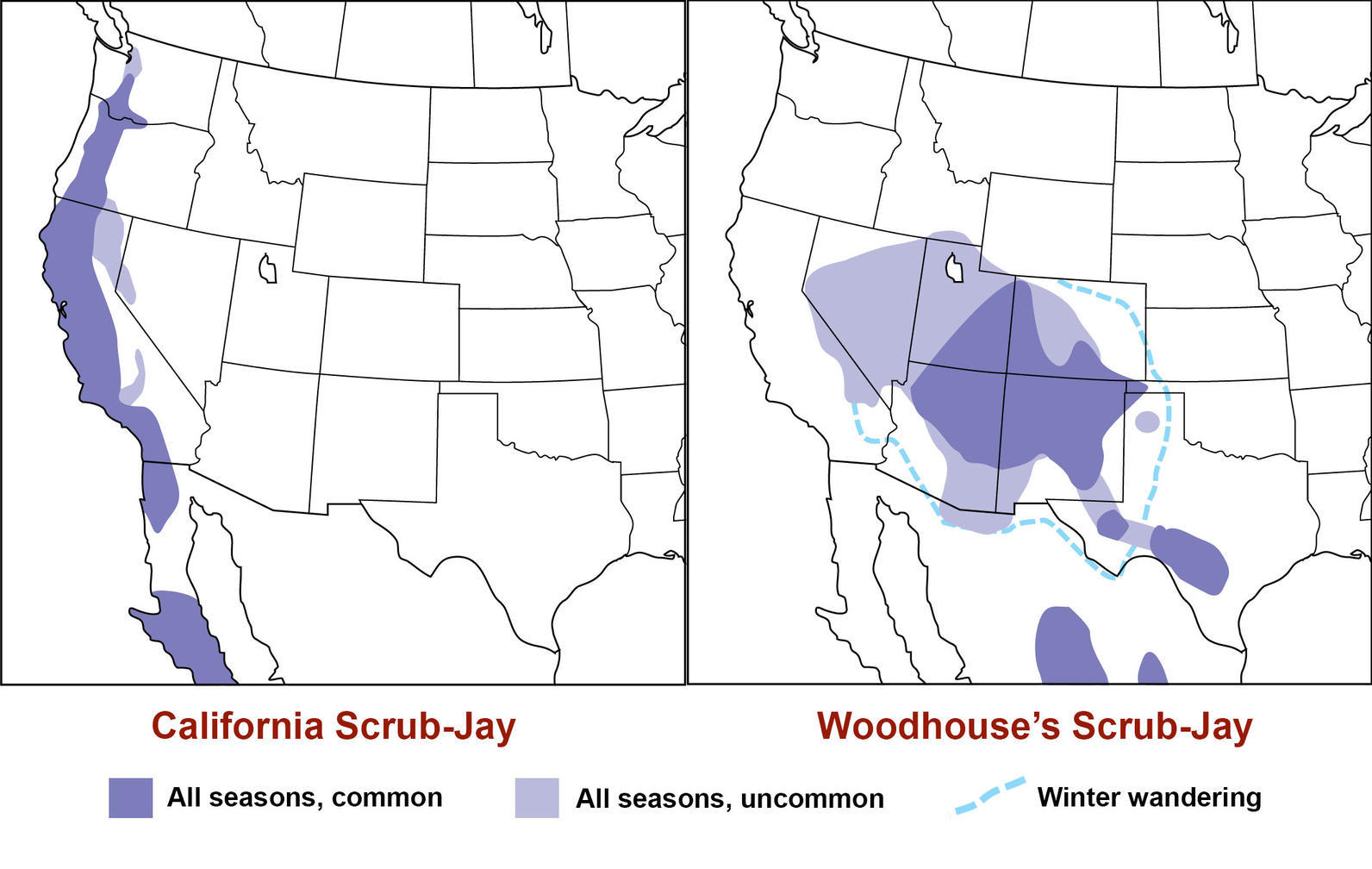Latest News and Updates from Audubon in California
California Condor. Photo: Scott Frier/USFWS

Black Oystercatchers have nested on Aramburu Island for the fourth year since major shoreline enhancement was completed. This year three chicks hatched!
All three eggs hatched on or about June 21st, and three downy hatchlings were seen stumbling about the nest area soon after. Black Oystercatchers can lay up to three eggs, but two is more common. Previous clutches on Aramburu, from what we believe to be the same pair of adult birds, have been limited to two eggs.
As of July 19, we see only two of the three chicks, but both are eating well and looking healthy. The young birds are about four weeks old at this point, and are likely to be able to fly (fledge) within a week or two. Fledged birds will continue to stay with the parents for months, honing their feeding skills.
Shoreline reconstruction on Aramburu Island took place in late 2012, and oystercatchers made their first attempt at nesting in the spring of 2013. The success of their breeding attempts points to the promise of such shoreline enhancement projects in other parts of the Bay and beyond!

Our friends at Audubon Magazine have a nice overview of the new official bird checklist from the American Ornithologists' Union. Jumping out at us is the new split of the Western Scrub Jay into two species, the California Scrub Jay and the Woodhouse's Scrub Jay. The California Scrub Jay isn't a total endemic, however, covering ground from Baja to Washington State. But, hey, we'll be happy to call it our own. And we'll continue to remind our friends that the spunky blue bird they saw in Los Angeles was not a Blue Jay.
Jamie Williams, President of the Wilderness Society, and Nancy Pfund, Founder and Managing Partner of DBL Partners, pleaded with the Bureau of Land Management to finalize California's Desert Renewable Energy Conservation Plan (DRECP). They argue in their post on The Hill that DRECP would help make California a leader not just in renewable energy, but in renewable energy that works well with wildlife conservation. An excerpt:
"The need for a solid plan is clear in the California desert, a region already feeling the impacts of prolonged drought and rising temperatures from climate change. If we’re going to get serious about slowing the march toward extinction for many native plants and animals, we must move swiftly to invest in clean energy, while taking steps to conserve wild places. With protection, these desert lands can become a wide, connected safe-haven, providing enough space for plants and animals to migrate and adapt to a warming temperatures....
...As leaders in both conservation and renewable energy, we encourage the BLM [Bureau of Land Management] to move quickly to finalize the Desert Renewable Energy Conservation Plan. We can seek renewable energy solutions without spoiling our precious public lands. California is poised to demonstrate to the nation that ambitious goals, combined with intelligent planning, can yield exceptional results. Let’s push this innovative plan over the finish line."
Read the whole post here.
Our newsletter is fun way to get our latest stories and important conservation updates from across the state.
Help secure the future for birds at risk from climate change, habitat loss and other threats. Your support will power our science, education, advocacy and on-the-ground conservation efforts.
Join the thousands of Californians that support the proposed Chuckwalla National Monument.